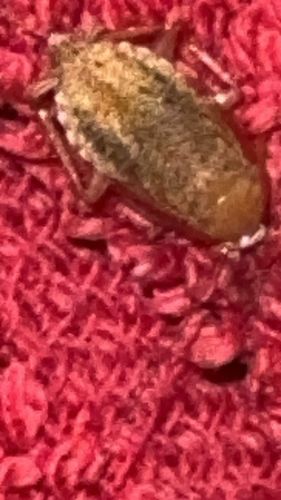Planthopper (likely a nymph or a short-winged adult)
Scientific Name: Varies widely by species within the Fulgoroidea superfamily. Cannot be specified from the image.
Order & Family: Order Hemiptera, Suborder Auchenorrhyncha, Superfamily Fulgoroidea (Planthoppers). Specific family identification is difficult without clearer details, but could be Delphacidae, Fulgoridae, Issidae, flatidae or others.
Size: Typically ranges from 2 mm to over 10 mm, depending on the species.

Natural Habitat
Found on various plants, including grasses, shrubs, and trees, depending on the species. They prefer environments with abundant vegetation.
Diet & Feeding
Planthoppers are herbivores, feeding on plant sap by piercing plant tissues with their mouthparts.
Behavior Patterns
Planthoppers are known for their ability to jump. Nymphs of some species produce a waxy secretion to cover themselves, possibly for camouflage or protection.
Risks & Benefits
Generally, planthoppers pose little direct risk to humans. However, some species can be significant agricultural pests by transmitting plant diseases (e.g., viruses) or by direct feeding damage to crops. In natural ecosystems, they are part of the food web, serving as prey for various predators.
Identified on: 9/2/2025